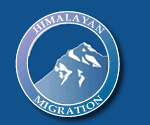

Glider expeditions to Everest
1985
The Spaniard, Alvaro de Orleans-Borbon writes:
In 1985 I organized a "Himalaya Soaring Expedition". It began as a filming attempt of the first slope soaring on the Everest face, with lots of advice by Emil Wick, which a couple of years before had flown there with a film producer (Bob Drew) and glider enthusiast (we shared parts of an LS3 glider in the US). Later the filming was indefinitely postponed, having tried high altitude video cameras attached to a glider flying out of Bishop, Owens Valley, California: the externally mounted professional Betacams failed repeatedly in -30 degrees C. Today there is much better equipment, but try it out before, spec sheets are untrustworthy.
Meanwhile I had secured permission to fly in Nepal, and the objective became a scientific expedition to compare the actual weather data with a computer weather forecast - at that time (1985) the computer modelling was "disturbed" by big mountain chains, and there was great interest to explore the Himalaya disturbance.
So a Taifun motorglider was heavily equipped with meteo and nav sensors (41 kg of stuff, including a Omega/VLF - no GPS at that time), and flown from Europe to Pokhara (Nepal) and back. Scientific directors were Joaquin Küttner, head of Large Scale Atmospheric Experiments at NCAR, NOAA, Boulder, CO, and Manfred Reinhardt, head of the Institute for Atmospheric Physics, DLR, München (the "German Nasa"). Instrumentation specialist was Bruno Neininger from the Federal Institute of Technology, Zürich, and logistics expert (critical for our success) was Peter Lert from USA. All extraordinary persons, without any of them the expedition would have failed - and all became lifelong friends.
In February 1985 in Pokhara we flew some ten days all the way close to the Chinese border up and down the Kali Gandaki, the world's deepest valley, crossing the Hiamalaya between the Annapurna and the Dhaulagiri. Max altitude up to 7000 meters, often bad weather, never found mountain waves.
A posteriori. I must privately tell you that we risked a lot in those flights. Be careful up there, we often "felt" real large scale movements, a bit like long oceanic waves, and refrained from flying real close to the higher mountains (we saw snow drifting downwards at 7.000 meters on the upwind side of mountains...), lest we find ourselves in a high altitude rotor: if you lose control at those altitudes, flutter is very near, and parachute jumps may just downgrade you from a bad air situation to a worse ground problem.











